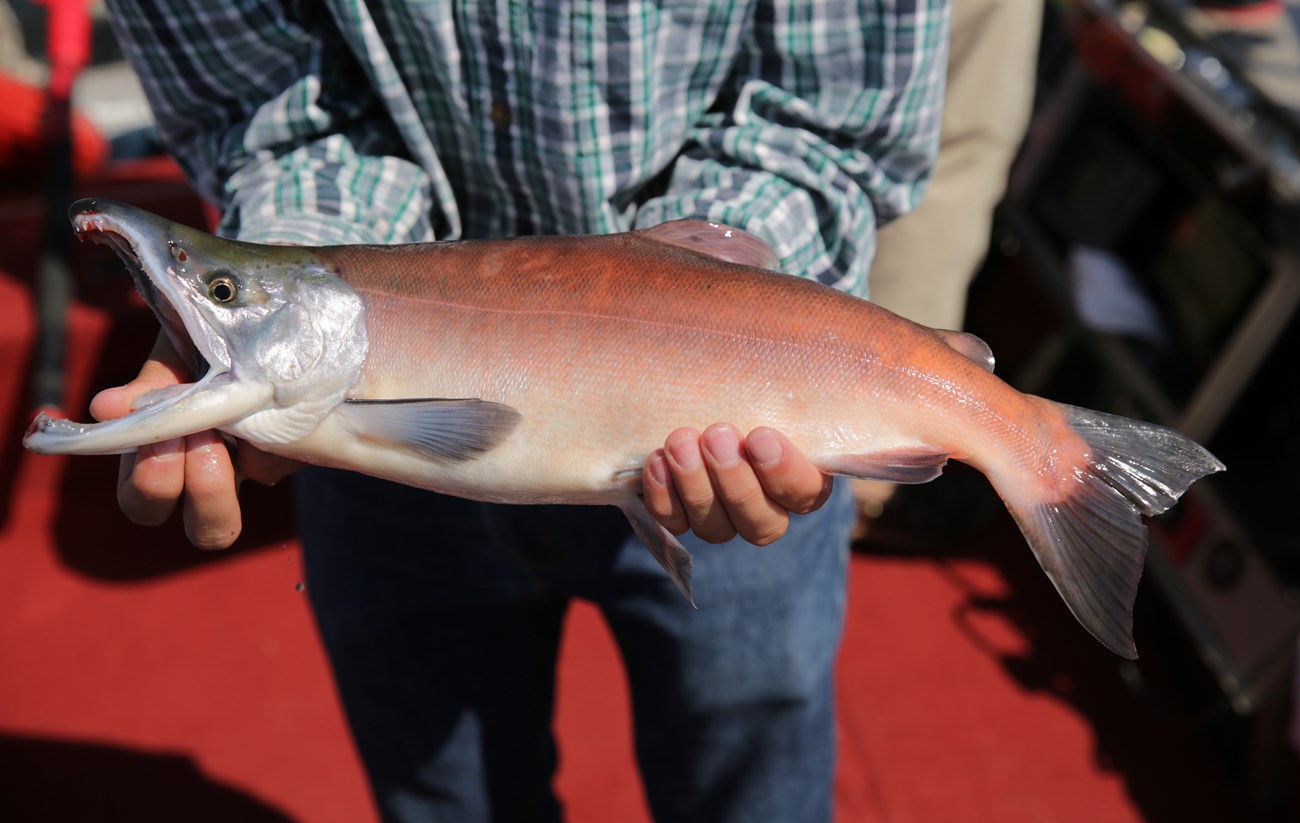Last updated: June 4, 2018
Article
Jigging
The soft sound of waves lapping against the dock fills the early morning air. You look out across lake as the sun rises and feel the worn-out cork handle on your fishing rod. You’re thinking about what lies ahead—a day of fishing!
There are many ways to enjoy National Park Service (NPS) lands and waterways, and one of the best ways is through fishing. While there are many different types of fishing, one of the easiest and most fun methods is jigging.
What Is Jigging?
Jigging is an easy and fun type of fishing that’s popular across the country. Its name comes from some of the equipment used—a weighted fishhook often tipped with an artificial bait. This hook is called a jig.
Jigging is also an easy-access type of fishing, enjoyed by small children, senior citizens, and everyone in between. Jigging can be done for all types of fish; the list is nearly endless—from salmon and trout to bluegill and bass.

NPS Photo / Forrest Czarnecki
How to Jig
Like the name suggests, a little bit of a dance is involved with jigging, but on the lure’s behalf. After a jig tipped with artificial bait (lure) is attached to the fishing line, it is cast out and retrieved using the jigging method.
Usually, jigs are not cast out like a normal fishing lure. Instead they’re “dropped” below the fishing spot until they reach the desired depth for fishing. Once the jig is underwater, it’s bounced up and down (jigged) by using the rod to lift and drop the lure.
The motion used to get the jig to “dance” up and down is a rhythmic and controlled movement. The movement is achieved by holding the rod in both hands, and then lifting the tip of the rod up several inches before slowly dropping the tip back down. This motion is then repeated over and over again until a fish bites, or you decide to change your lure. You can jig your lure at various speeds and lengths, it all depends on the species you’re after and the lure you’re using.
If a fish bites your lure, be sure to “set the hook.” Setting the hook helps keep it in the fish’s mouth when you’re reeling it in. You can set the hook with a single, sudden upward lift of the rod.
Gear for Jigging
The gear list for jigging is relatively simple and requires only a few things. Here’s a helpful list of what you need to jig:
-
Valid fishing license
-
Fishing rod and reel
-
Weighted fish hook or lure
-
Artificial (rubber) bait
-
A pair of needle nose pliers (to remove the hook from the fish’s mouth safely)
-
Place to fish
Where to Jig
Where you decide to fish helps determine how you fish, and if you will be jigging. Jigging is easiest from docks, piers, and boats. These platforms allow anglers to sink the lure down to the desired depth with precision. They also allow anglers to jig in a single spot and have greater control over where their lure is.
Jigging can also be done from the bank or shore. When jigging from the bank or shore, the lure must be cast out into the body of water and then jigged back to the angler relatively quickly. The jigging motion that makes the lure “dance” is just like the motion described above, but after each upward pull of the rod, the angler needs to reel in the slack fishing line before the next jigging motion. This will help keep the lure from getting stuck on any underwater structures like trees or rocks.
Be sure to check park regulations as fishing may not be allowed from certain areas within a park.
Expectations for Jigging
Jigging is one of the most fun fishing experiences out there, from catching a 22-inch long salmon or a 50-pound lake trout to reeling in dozens of 6-inch bluegill or an action-packed battle with a bass.
Researching the location and fish species you want to catch will play a big role in determining how you fish, so ask yourself a few questions before you grab your rod and head for the water. Here are a few questions to keep in mind when planning your trip and determining if you want to jig:
-
Where will I be fishing?
-
What kind of fish live there?
-
What kind of fish do I want to catch?
-
How will I fish for them?
-
Where will I be standing or sitting when I’m fishing?
-
What kind of experience am I after?
Be sure to know and obey all fishing and other park regulations before heading out on your next adventure.
